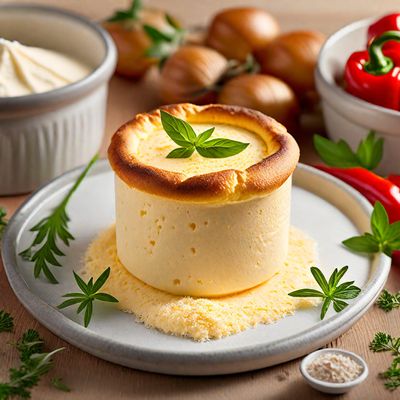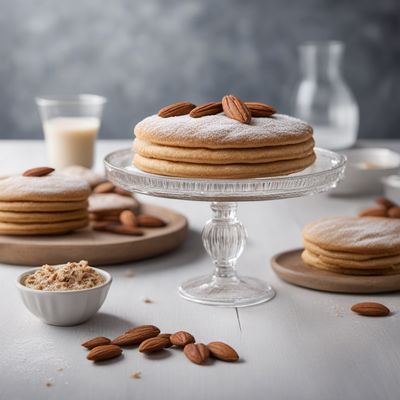
Ingredient
Cheese, trappist
The Monastic Delight
Trappist cheese is a semi-soft to firm cheese made from cow's milk. It has a pale yellow interior with a natural rind that ranges from pale yellow to reddish-brown, depending on the aging process. The texture can vary from smooth and creamy to slightly crumbly, and the flavor profile is complex, ranging from mild and buttery to nutty and tangy. Trappist cheese is often enjoyed on its own, paired with fruits and nuts, or used in various dishes such as sandwiches, salads, and gratins.
Origins and history
Trappist cheese originated in the monasteries of Trappist monks, who have been producing cheese for centuries as a means of sustaining their communities. The cheese-making process was passed down through generations, with each monastery developing its own unique recipe and techniques. Trappist cheese gained recognition and popularity outside of monastic communities during the 19th century and is now produced by both monastic and commercial dairies around the world.
Nutritional information
Trappist cheese is a good source of protein, calcium, and phosphorus. It also contains vitamins such as vitamin A and vitamin B12. However, it is important to note that Trappist cheese is high in saturated fat and sodium, so it should be consumed in moderation as part of a balanced diet. Individuals with lactose intolerance or dairy allergies should avoid Trappist cheese.
Allergens
Milk (including cow's milk), lactose, casein.
How to select
When selecting Trappist cheese, look for products that have a clean, natural rind and a consistent texture throughout. Avoid any cheese that has an off smell or visible mold. Trappist cheese is often labeled with the monastery or dairy where it was produced, which can be an indicator of quality and authenticity. Opt for cheeses that have been aged for longer periods if you prefer a stronger flavor.
Storage recommendations
Trappist cheese should be stored in the refrigerator to maintain its freshness and prevent spoilage. It is best to keep it in its original packaging or wrap it tightly in wax paper or plastic wrap to prevent it from drying out. Before consuming, allow the cheese to come to room temperature for optimal flavor and texture.
Preparation tips
Trappist cheese can be enjoyed in various ways. It can be served on a cheese board with fruits, nuts, and crackers, allowing its flavors to shine. It can also be melted and used in sandwiches, grilled cheese, or as a topping for burgers and pizzas. Trappist cheese pairs well with both sweet and savory accompaniments, such as honey, figs, apples, or cured meats. Experiment with different recipes and combinations to discover your favorite way to enjoy this monastic delight.
Culinary uses
Trappist cheese is commonly used in a variety of dishes and cuisines. It can be melted into sauces, soups, and fondues, or grated and sprinkled over pasta, salads, and gratins. Trappist cheese is also a popular choice for sandwiches, burgers, and paninis, adding a rich and creamy element to the dish. Its versatility makes it a staple in both home kitchens and professional culinary settings.
Availability
Trappist cheese is produced in various countries around the world, including Belgium, France, the Netherlands, and the United States. It is commonly available in specialty cheese shops, gourmet grocery stores, and online retailers that specialize in artisanal and imported cheeses.
More ingredients from this category » Browse all

Cheese, saint nectaire
The Creamy Delight of Saint Nectaire Cheese

Cheese, Monterey Jack
Monterey Jack: The Creamy Delight

Cheese, cream havarti
The Creamy Delight: Havarti Cheese

Cheese, leicester
The Bold and Tangy Delight: Unveiling the Secrets of Leicester Cheese

Cheese, oltermanni
The Creamy Delight

Cheese, beaufort
Beaufort: The Alpine Delight

Cheese, podlaski
The Delightful Polish Cheese

Cheese, double gloucester
Rich and Creamy Delight

Cheese, tomme de savoie
Savoie's Delight: Exploring the Flavors of Tomme de Savoie Cheese

Cheese, nisa
The Hidden Gem of Cheeses: Nisa, a Delightful Culinary Treasure

Cheese, edam
The Dutch Delight: Edam Cheese

Cheese, hushallsost
The Swedish Delight: Hushallsost - A Creamy and Nutty Cheese
Recipes using Cheese, trappist

Hungarian-style Cheese Soufflé
Magyar Magic: Irresistible Hungarian Cheese Soufflé

Toronto Maple Dacquoise
Maple-infused Dacquoise Delight

Belgian-style Beef Stew
Flemish Beef Delight

Hungarian Cordon Bleu
Paprika-infused Chicken Cordon Bleu with Hungarian Twist

Hungarian-style Pizza Margherita
Magical Magyar Margherita Pizza